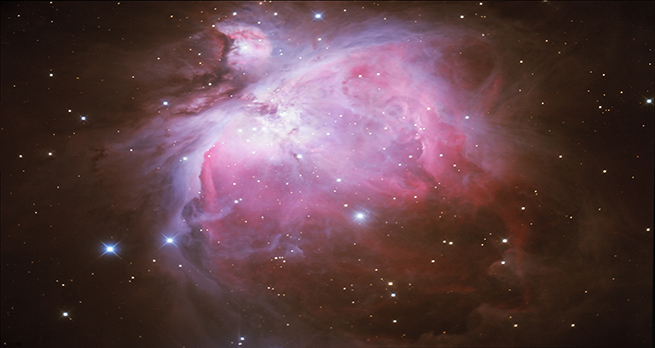3.2.8 Dark matter
What do scientists think holds galaxies together?

Transcript
Many spiral galaxies have had their masses estimated from how fast their stars are orbiting. The more mass that a galaxy contains, the faster its stars go in their orbits. This is because the more powerful the tug of gravity, the faster the stars have to move to avoid falling towards the centre.
The trouble is, if you add up all the masses of the stars in a galaxy, plus the mass of gas, it doesn’t come close to the mass estimated from the stars’ orbits. If stars and gas were all there was in a galaxy, the stars would be flung out of the galaxy, because they are moving so quickly. So what’s keeping galaxies together? It must be something non-luminous because it cannot be seen. Astronomers have called this dark matter.
Dark matter is needed to explain the motion of galaxies in general and in galaxy clusters in particular. Dark matter is found wherever ‘normal’ matter, such as the stuff that makes up galaxies (of all shapes), is found. For example, a large galaxy cluster will contain a very great amount of dark matter, which exists within and around the galaxies that make up that cluster.
Dark matter is so named because astronomers don’t know what it actually is – we can’t see it directly and can only infer its existence by the effect it has on the regular matter that we can see.
We are not able to observe dark matter directly, however the strong gravity can distort the light from galaxies behind the dark matter on its way to us. This distortion is known as ‘gravitational lensing’ and is a useful way of observing black holes and dark matter. Read more about gravitational lensing from the link below.
Next, we’ll look at dark energy.
